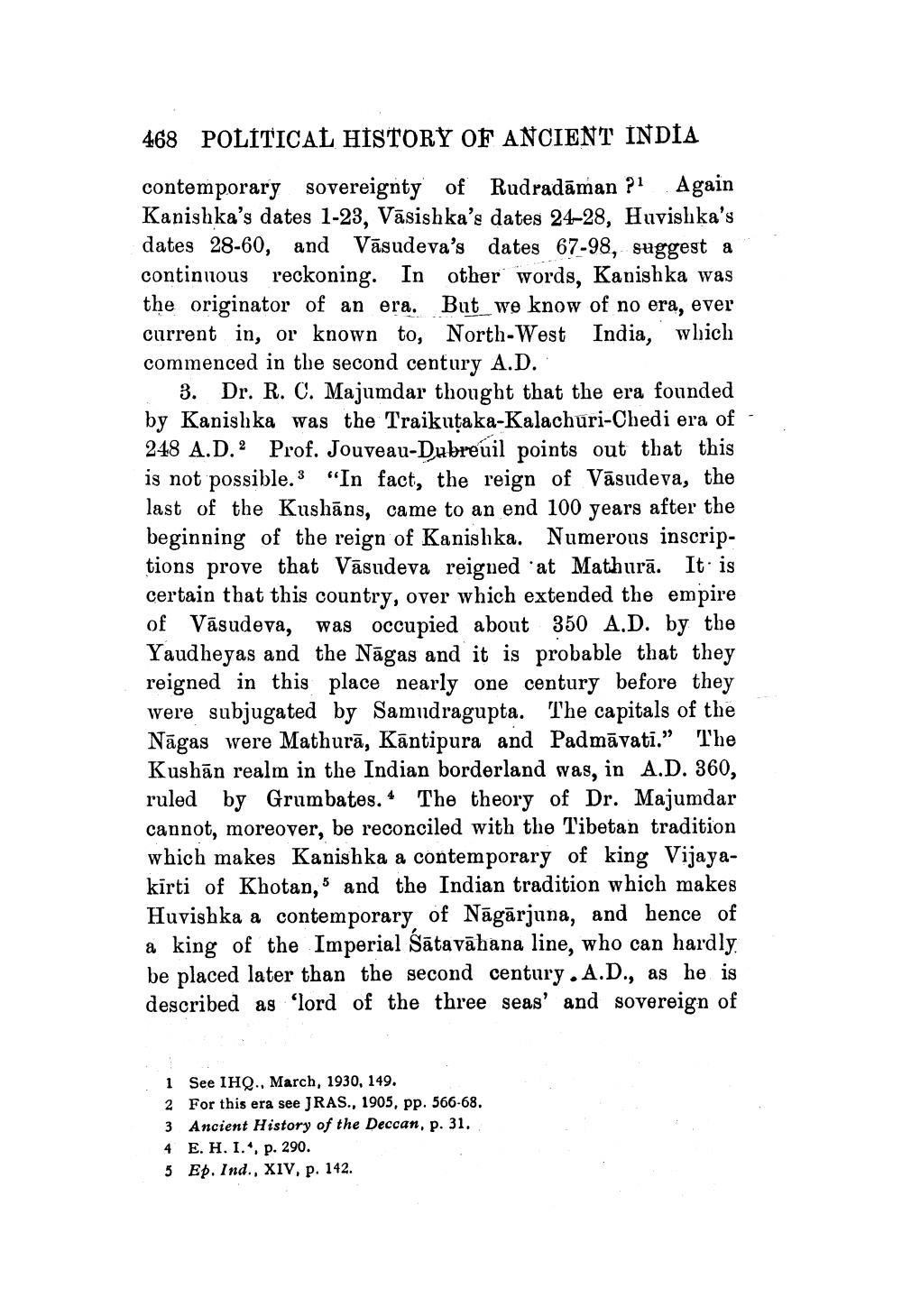________________
468 POLITICAL HISTORY OF ANCIENT INDIA
contemporary sovereignty of Rudradaman ?1 Again Kanishka's dates 1-23, Vasishka's dates 24-28, Huvishka's dates 28-60, and Vasudeva's dates 67-98, suggest a continuous reckoning. In other words, Kanishka was the originator of an era. But we know of no era, ever current in, or known to, North-West India, which commenced in the second century A.D.
3. Dr. R. C. Majumdar thought that the era founded by Kanishka was the Traikutaka-Kalachuri-Chedi era of 248 A.D. Prof. Jouveau-Dubreuil points out that this is not possible. "In fact, the reign of Vasudeva, the last of the Kushāns, came to an end 100 years after the beginning of the reign of Kanishka. Numerous inscriptions prove that Vasudeva reigned at Mathura. It is certain that this country, over which extended the empire of Vasudeva, was occupied about 350 A.D. by the Yaudheyas and the Nagas and it is probable that they reigned in this place nearly one century before they were subjugated by Samudragupta. The capitals of the Nāgas were Mathura, Kantipura and Padmavati." The Kushan realm in the Indian borderland was, in A.D. 360, ruled by Grumbates. The theory of Dr. Majumdar cannot, moreover, be reconciled with the Tibetan tradition which makes Kanishka a contemporary of king Vijayakirti of Khotan, 5 and the Indian tradition which makes Huvishka a contemporary of Nagarjuna, and hence of a king of the Imperial Satavahana line, who can hardly. be placed later than the second century.A.D., as he is described as 'lord of the three seas' and sovereign of
1 See IHQ., March, 1930, 149.
2 For this era see JRAS., 1905, pp. 566-68.
3
Ancient History of the Deccan, p. 31.
4 E. H. I., p. 290.
5 Ep. Ind., XIV, p. 142.




